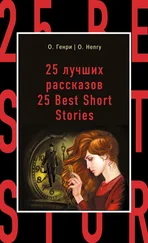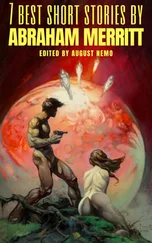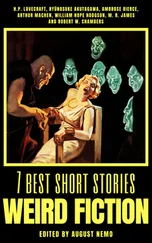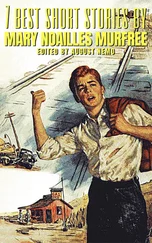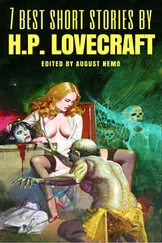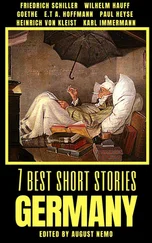Through the seventeenth and into the eighteenth century we behold a growing mass of fugitive legendry and balladry of darksome cast; still, however, held down beneath the surface of polite and accepted literature. Chapbooks of horror and weirdness multiplied, and we glimpse the eager interest of the people through fragments like Defoe's Apparition of Mrs. Veal, a homely tale of a dead woman's spectral visit to a distant friend, written to advertise covertly a badly selling theological disquisition on death. The upper orders of society were now losing faith in the supernatural, and indulging in a period of classic rationalism. Then, beginning with the translations of Eastern tales in Queen Anne's reign and taking definite form toward the middle of the century, comes the revival of romantic feeling--the era of new joy in nature, and in the radiance of past times, strange scenes, bold deeds, and incredible marvels. We feel it first in the poets, whose utterances take on new qualities of wonder, strangeness, and shuddering. And finally, after the timid appearance of a few weird scenes in the novels of the day--such as Smollett's Adventures of Ferdinand, Count Fathom--the release instinct precipitates itself in the birth of a new school of writing; the "Gothic" school of horrible and fantastic prose fiction, long and short, whose literary posterity is destined to become so numerous, and in many cases so resplendent in artistic merit. It is, when one reflects upon it, genuinely remarkable that weird narration as a fixed and academically recognized literary form should have been so late of final birth. The impulse and atmosphere are as old as man, but the typical weird tale of standard literature is a child of the eighteenth century.
THE EARLY GOTHIC NOVEL
The shadow-haunted landscapes of Ossian, the chaotic visions of William Blake, the grotesque witch dances in Burns's Tam O'Shanter, the sinister dæmonism of Coleridge's Christobel and Ancient Mariner, the ghostly charm of James Hogg's Kilmeny, and the more restrained approaches to cosmic horror in Lamia and many of Keats's other poems, are typical British illustrations of the advent of the weird to formal literature. Our Teutonic cousins of the Continent were equally receptive to the rising flood, and Burger's Wild Huntsman and the even more famous dæmon-bridegroom ballad of Lenore--both imitated in English by Scott, whose respect for the supernatural was always great--are only a taste of the eerie wealth which German song had commenced to provide. Thomas Moore adapted from such sources the legend of the ghoulish statue-bride (later used by Prosper Merimée in The Venus of Ille, and traceable back to great antiquity) which echoes so shiveringly in his ballad of The Ring; whilst Goethe's deathless masterpiece Faust, crossing from mere balladry into the classic, cosmic tragedy of the ages, may be held as the ultimate height to which this German poetic impulse arose.
But it remained for a very sprightly and worldly Englishman--none other than Horace Walpole himself--to give the growing impulse definite shape and become the actual founder of the literary horror-story as a permanent form. Fond of mediæval romance and mystery as a dilettante's diversion, and with a quaintly imitated Gothic castle as his abode at Strawberry Hill, Walpole in 1764 published The Castle of Otranto; a tale of the supernatural which, though thoroughly unconvincing and mediocre in itself, was destined to exert an almost unparalleled influence on the literature of the weird. First venturing it only as a "translation" by one "William Marshal, Gent." from the Italian of a mythical "Onuphrio Muralto," the author later acknowledged his connection with the book and took pleasure in its wide and instantaneous popularity--a popularity which extended to many editions, early dramatization, and wholesale imitation both in England and in Germany.
The story--tedious, artificial, and melodramatic--is further impaired by a brisk and prosaic style whose urbane sprightliness nowhere permits the creation of a truly weird atmosphere. It tells of Manfred, an unscrupulous and usurping prince determined to found a line, who after the mysterious sudden death of his only son Conrad on the latter's bridal morn, attempts to put away his wife Hippolita and wed the lady destined for the unfortunate youth--the lad, by the way, having been crushed by the preternatural fall of a gigantic helmet in the castle courtyard. Isabella, the widowed bride, flees from his design; and encounters in subterranean crypts beneath the castle a noble young preserver, Theodore, who seems to be a peasant yet strangely resembles the old lord Alfonso who ruled the domain before Manfred's time. Shortly thereafter supernatural phenomena assail the castle in diverse ways; fragments of gigantic armour being discovered here and therd, a portrait walking out of its frame, a thunderclap destroying the edifice, and a colossal armoured spectre of Alfonso rising out of the rains to ascend through parting clouds to the bosom of St. Nicholas. Theodore, having wooed Manfred's daughter Matilda and lost her through death--for she is slain by her father by mistake--is discovered to be the son of Alfonso and rightful heir to the estate. He concludes the tale by wedding Isabella and preparing to live happily ever after, whilst Manfred--whose usurpation was the cause of his son's supernatural death and his own supernatural harassings--retires to a monastery for penitence; his saddened wife seeking asylum in a neighbouring convent.
Such is the tale; flat stilted, and altogther devoid of the true cosmic horror which makes weird literature. Yet such was the thirst of the age for those touches of strangeness and spectral antiquity which it reflects, that it was seriously received by the soundest readers and raised in spite of its intrinsic ineptness to a pedestal of lofty importance in literary history. What it did above all else was to create a novel type of scene, puppet-characters, and incidents; which, handled to better advantage by writers more naturally adapted to weird creation, stimulated the growth of an imitative Gothic school which in turn inspired the real weavers of cosmic terror--the line of actual artists beginning with Poe. This novel dramatic paraphernalia consisted first of all of the Gothic castle, with its awesome antiquity, vast distances and famblings, deserted or ruined wings, damp corridors, unwholesome hidden catacombs, and galaxy of ghosts and appalling legends, as a nucleus of suspense and dæmoniac fright. In addition, it included the tyrannical and malevolent nobleman as villain; the saintly, long-persecuted, and generally insipid heroine who undergoes the major terrors and serves as a point of view and focus for the reader's sympathies; the valorous and immaculate hero, always of high birth but often in humble disguise; the convention of high-sounding foreign names, moistly Italian, for the characters; and the infinite array of stage properties which includes strange lights, damp trap-doors, extinguished lamps, mouldy hidden manuscripts, creaking hinges, shaking arras, and the like. All this paraphernalia reappears with amusing sameness, yet sometimes with tremendous effect, throughout the history of the Gothic novel; and is by no means extinct even today, though subtler technique now forces it to assume a less naive and obvious form. An harmonious milieu for a new school had been found, and the writing world was not slow to grasp the opportunity.
German romance at once responded to the Walpole influence, and soon became a byword for the weird and ghastly. In England one of the first imitators was the celebrated Mrs. Barbauld, then Miss Aikin, who in 1773 published an unfinished fragment called Sir Bertrand, in which the strings of genuine terror were truly touched with no clumsy hand. A nobleman on a dark and lonely moor, attracted by a tolling bell and distant light, enters a strange and ancient turreted castle whose doors open and close and whose bluish will-o'-the-wisps lead up mysterious staircases toward dead hands and animated black statues. A coffin with a dead lady, whom Sir Bertrand kisses, is finally reached; and upon the kiss the scene dissolves to give place to a splendid apartment where the lady, restored to life, holds a banquet in honor of her rescuer. Walpole admired this tale, though he accorded less respect to an even more prominent offspring of his Otranto--The Old English Baron, by Clara Reeve, published in 1777. Truly enough, this tale lacks the real vibration to the note of outer darkness and mystery which distinguishes Mrs. Barbauld's fragment; and though less crude than Walpole's novel, and more artistically economical of horror in its possession of only one spectral figure, it is nevertheless too definitely insipid for greatness. Here again we have the virtuous heir to the castle disguised as a peasant and restored to his heritage through the ghost of his father; and here again we have a case of wide popularity leading to many editions, dramatization, and ultimate translation into French. Miss Reeve wrote another weird novel, unfortunately unpublished and lost.
Читать дальше
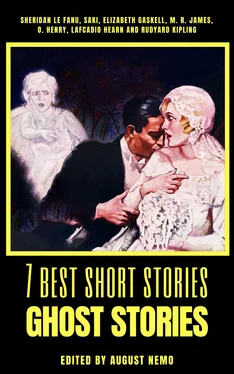
![Коллектив авторов - Best Short Stories [С англо-русским словарем]](/books/26635/kollektiv-avtorov-best-short-stories-s-anglo-thumb.webp)
